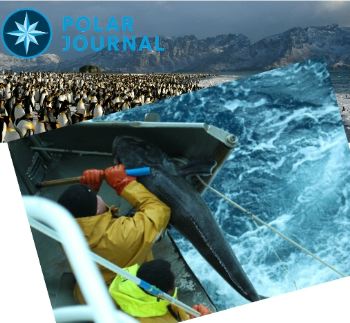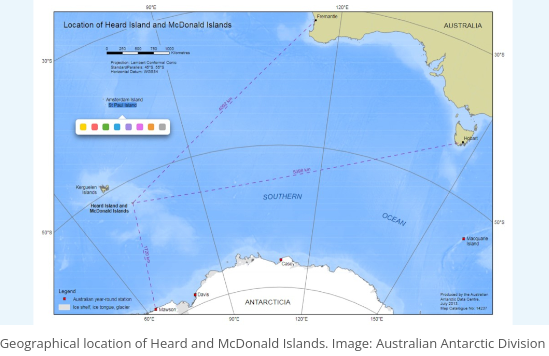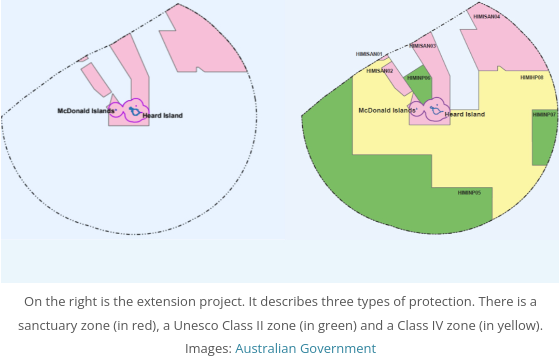|

The age of the oldest toothfish specimen in Australian naturalist collections has been estimated at around sixty years. Image: Christophe Delpont / TA
Marine protected areas and toothfish fishing around Heard and McDonald | Polarjournal
 ANTARCTICA ANTARCTICA
Monday, July 15, 2024, 01:00 (GMT + 9)
The following is an excerpt from an article published by Polarjournal:
The project to extend the marine park of the Australian archipelago closest to Antarctica has just been opened to public consultation, and the question of fishing is inevitably on the agenda.
.png) On July 5, the Australian government announced its intention to protect an additional 300,000 square kilometers of maritime space around the Heard and McDonald Islands, more than 4,000 kilometers southwest of Tasmania in the Southern Ocean. The project would expand an existing marine protected area to cover 90% of the exclusive economic zone (EEZ) around this Australian possession south of the polar front. “Quadrupling the size of the […] marine park would protect more of our oceans around the island and seals, albatross and whales, that call these oceans home,” said Environment Minister Tanya Plibersek. “This proposal would […] bring half of Australian oceans under protection while allowing the sustainable fishing industry to continue.” The Patagonian toothfish fishery – a type of cod from the cold waters of Antarctica – is worth $100 million to the country’s industry every year. Renowned for their meat, these fish irrigate a highly lucrative market in the United States and Asia. On July 5, the Australian government announced its intention to protect an additional 300,000 square kilometers of maritime space around the Heard and McDonald Islands, more than 4,000 kilometers southwest of Tasmania in the Southern Ocean. The project would expand an existing marine protected area to cover 90% of the exclusive economic zone (EEZ) around this Australian possession south of the polar front. “Quadrupling the size of the […] marine park would protect more of our oceans around the island and seals, albatross and whales, that call these oceans home,” said Environment Minister Tanya Plibersek. “This proposal would […] bring half of Australian oceans under protection while allowing the sustainable fishing industry to continue.” The Patagonian toothfish fishery – a type of cod from the cold waters of Antarctica – is worth $100 million to the country’s industry every year. Renowned for their meat, these fish irrigate a highly lucrative market in the United States and Asia.

Although discussions about the new marine protected area began earlier, the government’s announcement follows several events. Firstly, the release of toothfish populations. Published on May 7, 2024 by the Convention on the Conservation of Antarctic Marine Living Resources (CCAMLR), it shows that Patagonian toothfish numbers around Heard and McDonald Islands are collapsing. By 2023, the population had reached 39.4% of the “pristine” population, estimated at 224,760 tonnes. It has fallen below the sustainable fishing threshold (50 %) defined by CCAMLR. The government’s announcement comes at a time when the CCAMLR Ecosystem Monitoring and Management Working Group is meeting in Leeuwarden (Netherlands).
To fish or not to fish?
The toothfish fishery is reputed to be precautionary and sustainable. But is it really? The Department of the Environment tells us that it is MSC-labeled and that: “We work within CCAMLR to develop conservation measures that ensure the sustainable use of marine living resources, including toothfish, which is the main fishery carried out in the waters around Heard and McDonald.” Around five vessels usually cruise Australian waters at 50 degrees south latitude. Last year, only three vessels ventured there. This small fleet set out in 2023 in pursuit of 3,000 tonnes of fish and only brought in around 2,600 tonnes.

Unlike other toothfish fisheries, the one around Heard and McDonald is not restricted to longlines. Bottom trawls are active on the underwater shelves. Many NGOs do not consider this technique to be sustainable. Richard Leck, who heads the WWF Australia working group, criticizes the government’s proposed protected area delimitation system in the Australian media ABC News: “Those areas won’t overly impact on [the] existing fishing industry, and it would be great to see that proposal revised and those important species protected.”

“In terms of conservation objectives, full and high protection correspond to IUCN categories I and II,” explains Joachim Claudet, ocean advisor at CNRS (France), in issue no.338 of Chasse-Marée-magazine. “In a ‘light’ marine protected area, some protection exists, but moderate to significant extractions and impacts are permitted.” [continues...]
Author/Source: Camille Lin / PolarJournal AG | Read the full article by clicking the link here
[email protected]
www.seafood.media
|



